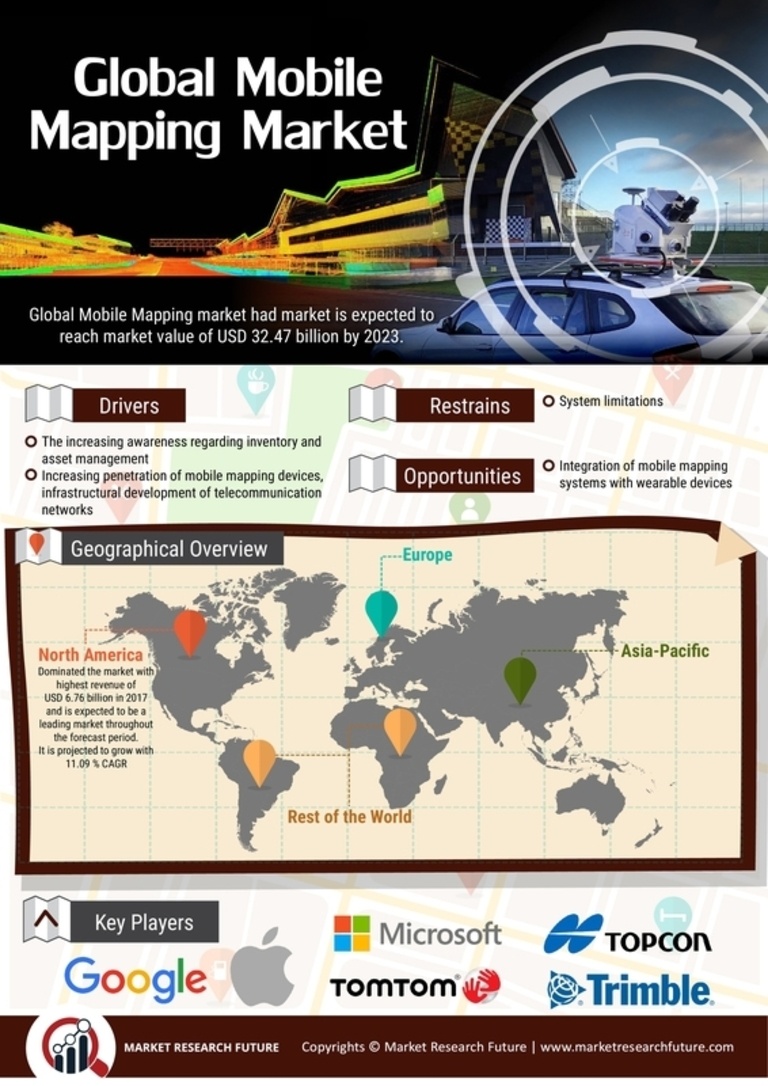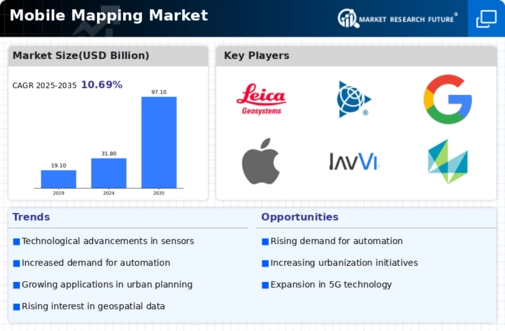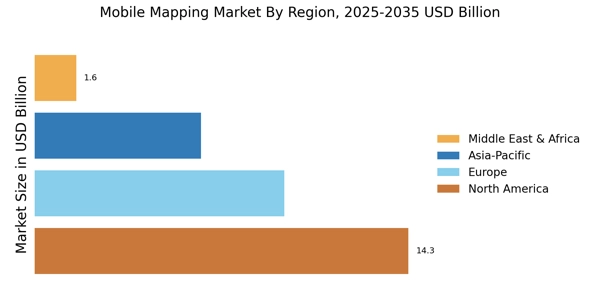Expansion of Smart City Initiatives
The Mobile Mapping Market is significantly influenced by the expansion of smart city initiatives, which aim to enhance urban living through technology. As cities evolve into smart environments, the need for accurate mapping and spatial data becomes paramount. Mobile mapping solutions play a crucial role in the development and maintenance of smart infrastructure, including transportation systems, utilities, and public services. Recent statistics indicate that investments in smart city projects are expected to reach trillions of dollars in the coming years, creating substantial opportunities for mobile mapping providers. This trend underscores the importance of integrating mobile mapping technologies into urban planning and development strategies.
Increased Demand for Real-Time Data
The Mobile Mapping Market is witnessing a surge in demand for real-time data, driven by the need for timely and accurate information across various applications. Industries such as logistics, construction, and emergency response are increasingly adopting mobile mapping solutions to enhance operational efficiency and decision-making processes. The ability to capture and analyze data in real-time allows organizations to respond swiftly to changing conditions, thereby improving service delivery and resource management. Market data suggests that the demand for real-time mapping solutions is expected to rise significantly, with a projected increase in adoption rates among businesses seeking to leverage data for competitive advantage.
Technological Advancements in Mobile Mapping
The Mobile Mapping Market is experiencing rapid technological advancements that enhance data collection and processing capabilities. Innovations in LiDAR, photogrammetry, and GPS technologies are driving the development of more accurate and efficient mapping solutions. For instance, the integration of artificial intelligence and machine learning algorithms into mobile mapping systems allows for real-time data analysis and improved decision-making. According to recent data, the market for mobile mapping systems is projected to grow at a compound annual growth rate of over 15% through 2026. This growth is indicative of the increasing reliance on advanced technologies to meet the demands of various sectors, including transportation, urban planning, and environmental monitoring.
Growing Adoption in Transportation and Logistics
The Mobile Mapping Market is experiencing growing adoption within the transportation and logistics sectors, where accurate mapping is essential for operational efficiency. Companies are increasingly utilizing mobile mapping technologies to optimize routes, monitor fleet performance, and enhance supply chain management. The integration of mobile mapping solutions allows for better visibility and tracking of assets, which is crucial in a highly competitive market. Data indicates that the transportation sector is one of the largest consumers of mobile mapping services, with a projected market share of over 30% by 2026. This trend highlights the critical role of mobile mapping in driving innovation and efficiency in logistics operations.
Rising Demand for Geographic Information Systems (GIS)
The Mobile Mapping Market is witnessing a rising demand for Geographic Information Systems (GIS), which are integral to various applications, including urban planning, environmental management, and disaster response. The synergy between mobile mapping technologies and GIS enhances the ability to visualize and analyze spatial data effectively. As organizations increasingly recognize the value of geospatial data, the demand for mobile mapping solutions that integrate seamlessly with GIS platforms is expected to grow. Market analysis suggests that the GIS market is projected to expand significantly, with mobile mapping playing a pivotal role in providing accurate and timely data for informed decision-making across multiple sectors.


















Leave a Comment